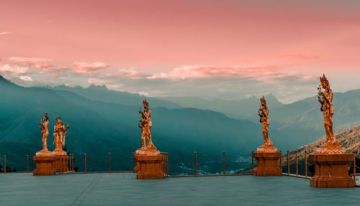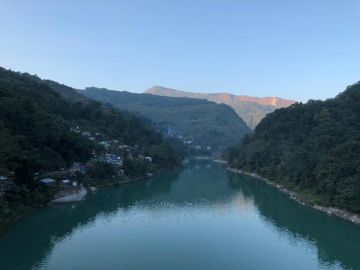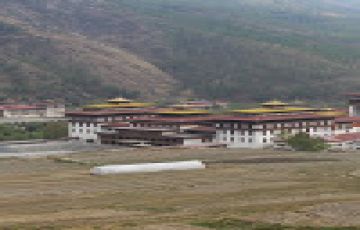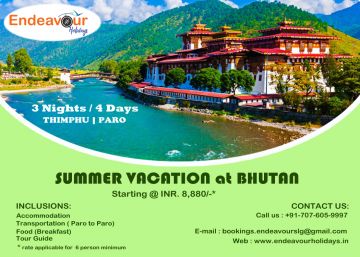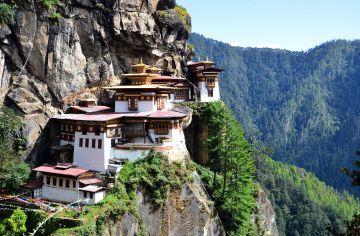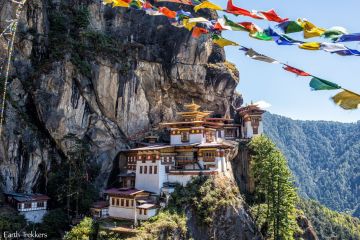Price (per person)
Duration
Tour Type
Itinerary
Arrival At Paro - Thimpu
-On arrival at Paro, you will be transferred to Thimpu. In the evening, we will visit Tashichho Dzong in Thimphu. It houses the throne room of His Majesty the King of Bhutan and is the summer residence of the venerated monastic community. The current Dzong is the impressive result of a redesign of the original medieval structure sanctioned by the Third King, His Majesty King Jigme Dorji Wangchuk, when he moved the capital to Thimphu from Punakha. The Fortress of the glorious religion houses the throne room of His Majesty the King, the main secretariat building and the central monk body. Overnight at Hotel
Thimpu
+Visit Folk heritage museum, Institute of traditional medicine, Memorial Chorten and National Library of Bhutan in Thimphu. The Folk heritage museum a three storied traditional building houses the Folk Heritage Museum. The earthen and timber building was renovated and restored few years ago to appear as it was century ago. Established in 2001 in Thimphu, the museum provides glimpse into the traditional Bhutanese material culture and way of life. The artifacts, which are kept inside the house, remind the visitors about how the rural Bhutanese live today. This 19th century traditional house provides you a glimpse of the Bhutanese lifestyle, and artifacts from the rural households. One can come across typical household objects, tools and equipment. Besides, the museum also organizes demonstrations of rural traditions, skills, habits and customs and educational programs for children. The activities of the museum follow a seasonal rhythm, just like the activities of a true rural household, offering you something new to see, every time you visit it. The rural setting and flavor has been well-preserved and you can see paddy, wheat and millet fields here, a traditional water-mill with mill stones more than 150 years old, traditional style kitchen gardens with vegetables that were grown over the past 100 years and the famous traditional hot stone bath. Native trees and plants that had domestic uses in Bhutanese rural household are being grown here in an effort to keep indigenous knowledge about the use of natural resources alive and have a patch of greenery, right in the heart of the capital city of Thimphu. Institute for Zorig Chusum commonly known as the Painting School, where a six-year training course is given in the 13 traditional arts and crafts of Bhutan. Thangtong Dewachen Nunnery, the only nunnery in the Capital it is popularly known as Zilukha Anim Dratshang. Located few minutes’ drive from the town. It was built in 1976 by Drubthob Rikey Jigdrel the 16th emanation of Thangtong Gyalpo who built temples and iron chain bridges. You may interact with some 60 nuns who have devoted their life to spirituality and Buddhism. The National Institute of Traditional Medicine was established in 1988 with the concept to merge the allopathic and traditional systems of healing. It contains an impressive, large laboratory and production facilities that ensures quality of the products, the components of which includes plants, minerals, animal parts, precious metals and gems. The Institution produces traditional Bhutanese medicine towards the needs of the public. There is a day-care facility and clinic where doctors diagnose patients and prescribe appropriate medicines or treatments. The institute also researches the use of herbs and plants and has a plot on the premises. A small museum and a gift shop where the famous herbal tea -Tsheringma- is produced are also present in its compounds. There is also a training school for traditional medicine practitioners. After the closing of the Institute the visitors can walk along the compound to view it from the outside. The Memorial Chorten, also known as the Thimphu Chorten, is a large Tibetan-style Buddhist Monastery is a popular landmark in the city with its golden spires and bells. It was built in 1974 to honor the memory of the third king, Jigme Dorji Wangchuck. The architecture of the chorten has been designed to present it as ‘one of the most visible religious structures in Thimphu’. The whitewashed chorten is decorated with richly carved annexes facing the cardinal directions, and features elaborate mandalas, statues and a shrine dedicated to the popular third king. There are numerous religious paintings and complex tantric statues housed inside reflecting both peaceful and wrathful aspects of Buddhist deities. This chorten is unlike other chortens as it does not enshrine the mortal remains of the King. Only the King’s photo in a ceremonial dress adorns a hall in the ground floor. The King when he was alive wanted to build ‘a chorten to represent the mind of the Buddha’. Overnight at Hotel
Thimpu To Punakha By Surface
+Visit Dochula Pass, Chimi Lhakhang and Punakha Dzong Dochula pass, located 30 km away from the capital, on the way to Punakha from Thimphu offers a 360-degree of beautiful panoramic view of Himalaya mountain range, especially on clear winter days. The 108 chortens that adorn the beauty of this place were built by Queen Mother to commemorate the Bhutanese soldiers who were killed when fighting the Indian rebels in 2003. The pass is also popular spiritual place for both locals and tourists because of an important temple that is located on the crest of Dochula pass. Besides the spirituality of the place many Bhutanese families visit the pass during holidays and weekends to simply enjoy the scenery of the place with their pack lunch and hot tea. For tourists, the place is an ideal location to capture beautiful pictures of Himalaya mountain range provided the weather permits. Chimi Lhakhang located near Lobesa; Punakha stands on a round hillock and is flanked by hundreds of prayer flags. Built in 1499, this monastery is dedicated to Lama Drukpa Kinley or ‘the Divine Madman’. An accomplished master of Mahamudra Buddhist Tradition, he is also known as the ‘Mad Saint’ for his unorthodox ways of teaching Buddhism by singing, humor and outrageous behavior, which amounted to being bizarre and strong sexual overtones and inclinations. Drukpa Kinley is also a cultural icon in Bhutan around whom countless yarns, fictions, stories and legends have been spun. In founding the site it is said that Lama Kunley subdued a demon of Dochu La with his “magic thunderbolt of wisdom” and trapped it in a rock at the location close to where the chorten now stands. He is also the saint who advocated the use of phallus symbols as paintings on walls and as flying carved wooden phalluses on house tops at four corners of the eves. The monastery is the repository of the original wooden symbol of phallus that Kunley brought from Tibet. This wooden phallus is decorated with a silver handle and is used to bless people who visit the monastery on pilgrimage, particularly women seeking blessings to beget children. The tradition at the monastery is to strike pilgrims on the head with a 10 inch 25 cm wooden phallus erect penis. Traditionally symbols of an erect penis in Bhutan have been intended to drive away the evil eye and malicious gossip. The Punakha Dzong, also known as Pungtang Dechen Photrang Dzong meaning ‘the palace of great happiness or bliss’ is the administrative centre of Punakha Dzongkhag in Punakha, Bhutan. Constructed by Zhabdrung Shabdrung Ngawang Namgyal on the 8th day and 8th month of the Fire ox year in 1673, it is the second oldest and second largest Dzong in Bhutan and one of its most majestic structures. Punakha Dzong was the administrative centre and the seat of the Government of Bhutan until 1955, when the capital was moved to Thimphu. It is a six-storied structure with a central tower or Utse at an average elevation of 1, 200 meters 3, 900 ft with a scenic, mountainous background. The materials used in building the Dzong consisted of compacted earth, stones and timber in doors and windows. The Dzong was constructed as ‘an embodiment of Buddhist values’. The first King of modern Bhutan was crowned in Punakha Dzong. Punakha Dzong remained the center of government until it was relocated to Thimphu. In 2011, the wedding of the 5th King was held in this fortress. Overnight at Hotel
Punakha
+After breakfast we will drive 12 km north of Punakha and hike to Khamsum Yulley Namgyal Chorten, a fine example of Bhutanese architecture and artistic traditions. An hour hike to the Chorten, through a moderately inclined trail surrounded by pine trees, this site offers beautiful view of the Punakha Valley. The Chorten built to remove negative forces and promote peace, stability and harmony in the changing world dominates the upper Punakha Valley with commanding views across the Mo Chhu and up towards the mountainous peaks of Gasa and beyond. A fine example of Bhutanese architecture and artistic traditions, the Khamsum Yulley Namgyal Chorten stands out on a beautiful ridge above the Punakha valley. This 4-storey temple was built by Her Majesty the Queen Mother, Ashi Tshering Yangdon Wangchuck as per the Holy Scriptures and took 9 years to complete it. This temple has been dedicated for the well being of the kingdom, its people and all sentient beings. Then you will drive to visit Nalanda University, a university for the monks. You will get an opportunity to interact with monks here. They are learning to speak English so they will be very happy if you interact with them.
Punakha To Paro By Surface
+Visit Paro Dzong and National Museum. After freshen up visit Paro Dzong is one of the most impressive and well-known dzongs in Bhutan. One of the finest examples of Bhutanese architecture, it is also known as the Rinpung Dzong, which means ‘fortress on a heap of jewels’. It is the administrative seat of the district of Paro. The Dzong was built in the 16th century on the foundation of a monastery built by Guru Rinpoche. Unlike most of the other dzongs in Bhutan, it survived the massive 1897 earthquake mostly unscathed, though it was almost burnt to the ground by a fire in 1907. All-important relics were lost to the fire and nothing could be salvaged except for the Thongdrol, a 20x20 meter-wide Thangka. The Thangka is displayed annually during a ceremony called Paro Tshechu. The Dzong was however rebuilt the following year. The National Museum of Bhutan is housed inside the revamped circular Ta-dzong building, an ancient watchtower above the Paro Dzong. This unusual round building is said to be in the shape of a conch shell. The original building was constructed in 1656 but the building was converted into a museum in 1968. The necessary infrastructure was created to house some of the finest specimens of Bhutanese art, including masterpieces of bronze statues and paintings gathered from different parts of the country. Suitable galleries were constructed to house the extensive collections. Works of art were elegantly displayed on scientific lines. Some of the handicrafts items cover the history and cultural heritage of more than 1500 years. The National Museum has in its possession over 3, 000 works of Bhutanese art, rich holdings of ious creative traditions and disciplines that represent a remarkable blend of the past with the present and is a major attraction for local and foreign visitors. Overnight at Hotel
Paro
+Hike to Taktsang Monastery and later visit Kyichu Lhakhang. Hike Duration: 4. 5 hours approx. Taktsang Monastery: Perched on the side of a vertical cliff at 3000 m altitude north of Paro, this monastery creates an impressive sight, and is the unofficial symbol of Bhutan. It is one of the most famous Buddhist Monasteries in Bhutan and is also referred to as the ‘Tiger’s Nest’. Legend has it that Guru Rinpoche Guru Padmasambhava flew to this location from Khenpajong, Tibet on the back of a tigress and subdued a demon. He then meditated in a cave here for three months and emerged in eight incarnated forms manifestations and blessed the place. Guru Padmasambhava is known for introducing Buddhism to Bhutan. Today, Paro Taktsang is the best known of the thirteen caves in which he meditated. The first monastery was constructed 1694, but in 1998 a tragic fire destroyed most of the original buildings - which have since been painstakingly restored to their former glory. Taktsang Monastery is a pilgrimage site for both tourists and locals, it is a journey filled with spiritual bliss. Keeping the spiritual side aside, the journey up to Taktsang Monastery is a Hiker’s delight. An hour hike up to a small wooden teahouse called Cafeteria provides close view of the monastery. A further and a rather challenging hike lead you to the glorious Taktsang Monastery. Located close to the Paro Airport, the Kyichu Lhakhang is an important Himalayan Buddhist Temple. It is one of Bhutan’s oldest religious sites built in the seventh century. This temple is one of 108 built by Tibetan emperor Songtsen Gampo to subdue a demoness who prevented the spread of Buddhism. Temples were built across the Himalayas to pin her body down. Kyichu Lhakhang pins down her left foot and Jamba Lhakhang in Bumthang her left knee. Guru Rimpoche visited this temple in the eight century and concealed many spiritual treasures here. Pilgrims turn the many prayer wheels along the walls as they circumambulate the temple. The fine statues of the Bodhisattvas and the Buddha are national treasures. The wooden floor of the sanctum is inlaid with turquoise and coral gemstones offered by pilgrims. Overnight at Hotel
Final Departure
+Today you will be transferred to the airport for your onward journey.
Inclusions
- Accommodation
- Sightseeing
Exclusions
- Transfers
- Breakfast
Terms and Conditions
- * 25% advance to be paid for booking of the total tour package cost.
- * Airfare/Transport fare to be paid full at one time in advance.
- * Upon cancellation, refund will be made after deducting the Retention Amount.
- * Retention Amount ies as per the number of days left before your package start date.
- * Refund will be made within 15 working days from the date of receipt of the cancellation.
Durations
Theme
Similar Tour Packages
Beautiful 2 Days 1 Night Paro with Thimphu and punakha Holiday Package
Best 7 Days 6 Nights Thimphu, Thimpu, Punakha with Paro Trip Package
Experience 7 Days Thimphu, Punakha Bhutan and Paro Tour Package
Family Getaway 7 Days 6 Nights Paro, Punakha with Thimphu Holiday Package
3 IN 1 PACKAGES / BHUTAN, DARJEELING, GANGTOK / HOLIDAYS TOUR 10 DAYS/ 9 NIGHTS / FOR JUST RS 34000/-
Similar Places

Tashichoedzong: Thimphu
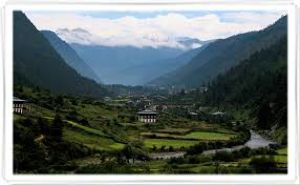
Torsa Strict Nature Reserve
5.0 (8 Ratings)

Chimi Lhakhang Temple
5.0 (8 Ratings)
_1515404286t.jpg)
Khamsum Yulley Namgyal Chorten
5.0 (8 Ratings)

Spending Time In The Boutique Hotels
5.0 (8 Ratings)

National Library
5.0 (8 Ratings)

Sangchhen Dorji Lhuendrup Nunnery
5.0 (8 Ratings)

Suspension Bridge
5.0 (8 Ratings)
Tour Packages For Thimphu, Punakha, Paro
2 Days 1 Night Paro to Gangtey Romantic Vacation Package
Experience 2 Days Paro to PARO - THIMPHU - PUNAKHA - TAKTSANG - PARO Vacation Package
Beautiful 3 Days 2 Nights Paro To Thimphu, Thimphu To Paro with Paro Holiday Package
BHUTAN THIMPHU PARO SIMTOKHA DZONG TAKIN ZOO TIGER NEST 3 NIGHT 4 DAY VACATION
Family Getaway 5 Days Siliguri to Phuntsholing Weekend Getaways Tour Package
4 Days 3 Nights Paro to Thimphu Vacation Package
Beautiful 8 Days 7 Nights Bagdogra, Thimphu, Phunakha with Paro Trip Package
7nights 8 Days Bhutan tour by Savannah Tourism
Family Getaway 8 Days 7 Nights Paro Bhutan Tour Package
Thimphu, Punakha Bhutan, Paro Bhutan with India Tour Package for 8 Days from India
Beautiful 11 Days 10 Nights Bhutan, Paro, Thimphu, Punakha, Trongsa and Jakar Vacation Package
Best Phuentsholing Bhutan Tour Package for 8 Days 7 Nights from India
- Home
- Bhutan
- Thimphu Tours
- Amazing 7 Days 6 Nights Punakha Trip Package
- Log in
- Enquiry Form
To City (Destination)
From City
Travel Date
Travel Duration (In Days)
Adult
Child
Infant
Travel With
Hotel
Rooms
Type of Trip
Total Budget (in INR)
Ticket Booked ?
Ticket Required?
Mode of Transport
Ticket Category
I will book
Date of Birth
Gender
Marital Status
Income (Per Month)
Nationality
Preferred Language
Total countries visited so far
Do you have a Visa ?
Do you have a Passport?
Preferred Time to Call
We have identified additional inquiries related to your tour. Please review them and let us know if there are any inquiries you would like us to remove.

















